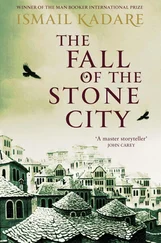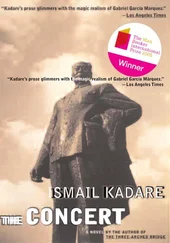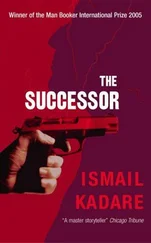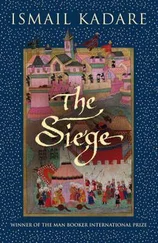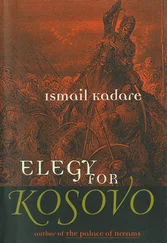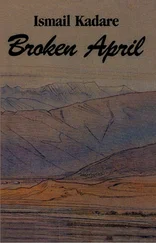The Pyramid Demands Its Mummy
WHEN news broke that the pyramid was finished, the inhabitants of the capital, who were the first to hear it, were dumbfounded, A fair number cupped their hands to their ears.
“You said the investigation was finished?”
“No, not the investigation, the pyramid!”
“Oh, that pyramid…”
The dirt of a quite different kind of construction was still on their backs; their ears were still full of the echoes of relentless interrogations: You maintain that you never were on row eighty-one? that you said nothing to the hauler of stone number fifteen hundred and two? But why don’t you confess? We know it all anyway! As a result, for a long while few people had cared very much about what was going on on the ground at Giza.
Yet work on the pyramid had proceeded as in a dream, without a hitch. Dressed stone slabs were placed on the upper part of the north slope, and the other slopes that had inexplicably been left bare until then were also finished with limestone panels, progressively concealing the raw masonry blocks that had been hauled there from distant places under clouds of dust and secrecy; then workers set the four very last blocks that had been delayed for so long (the order was brought one afternoon by a black-veiled messenger); and finally, they raised the pyramidion to the vertex of the monument, It was the kingstone, dressed in gold leaf that sparkled even before moonrise, and it aroused an uncanny kind of commiseration. From the moment it was put into place until the dawn of the following day, people expected the sky to redden and bleed from being scratched by the pyramidion’s tip: blood-rain should have trickled down the steps: but nothing of the sort came to pass. Without delay, as if they were cutting a newborn child’s umbilical cord, workers dismantled the hoisting ramp that had served to raise the final stones, and thus removed the last remaining link between the ground and the vertex.
Although public attention had mostly been fixed on what was happening on the outside and at the top, far more extensive work had been going on lower down inside the pyramid. The black granite doors were locked shut, as were the false doors that people might have suspected of being real, as well as other entry ways that it would have been wiser to consider as giving onto dead-end galleries had they ever been reopened, and so on, The “dead men,” as the inside workers were called, suffered from incessant-migraines, They pretended that they did not know the secret of the false sliding doors, nor of the ones believed to be real but which it was preferable to consider false, unless it was the other way round — and as a result they were permanently confused, and had no real idea, in the end, of what was what. They could not decide whether it would be better for them to take some initiative, or on the contrary to leave things to their fate; they would pace up and down., grinning, sighing, and scowling, as if they were demented, pretending not to be pretending., and eventually, at their wits’ end, they would break down.
When they emerged pasty-faced on the last day of their work, and saw the soldiers waiting for them outside with axes in their hands, they understood how pointless had been all their meanderings in the pyramid’s inner labyrinths, all their cunning, all their deceptions and their feigned gullibility at the sight of false doors, or of real ones that led to dummy passages, and so on. They finally realized that their fate had been sealed twenty years earlier, on that November day when the architect-in-chief, Hemiunu, had sketched the first draft of the pyramid’s plan on a piece of papyrus. Height, orientation, gradient, axis, the distribution of the enormous weight of the masonry, and so on, had all been jotted down, and among all the many numbers and formulas there must also have been an unremarkable little sign, something like the letter D, for instance, D for “Dead,” meaning them. Without their deaths, the self-enclosed, secure, and eternally impenetrable system that had been planned would not have been quite perfect. Which implied that their deaths had been inscribed from the start in the sacred formulas of the pyramid.
Perhaps each hoped even as he knelt before the soldier’s axe, perhaps he hoped until the very last moment that he would benefit from a stay of execution so as to join that small handful of men who would open the secret passage on the day the Pharaoh’s body would be laid to rest in the pyramid. The architect-in-chief selected the reprieved with a wave of his hand. They were made to stand to one side, eleven men in all. All hope now lost, the others bowed their heads. Some left messages for their loved ones; most of them shouted “Long live the Pharaoh!” Only two yelled out “Death be upon thee, Cheops!”
People had expected blood to flow from the vertex because of the pyramidion scratching the sky, but instead it welled up at the foot of the mountain of stones.
At dawn the reprieved were taken in covered wagons to an unknown destination; As they drew away from the pyramid, their eyes remained fixed on a point near the summit where the exit shaft was located, the spot where, on the day of Cheops’s funeral, after locking each of the doors from the inside, they would emerge into the light. They knew that they would meet death the very moment their heads came out of the shaft, but the summit was so high that the crowds amassed for the funeral ceremony would not be able to make out a thing, and certainly not the blood that would stain the top of one of the pyramid’s four faces.
Anyway, that day was still far off. The idea that until then their lives would be tied to the Pharaoh’s as by a chain of gold made them feel so joyful that they began to sing. Or rather, they thought they were singing. In reality, the sound that came from their lips was a terrifying croak.
No official ceremony was organized, but most of the inhabitants of the capital as well as foreign legations came to look at the finished pyramid. While the foreigners oohed and aahed (“How majestic it is! How tall!”), locals shrugged their shoulders, exchanged nods and winks, restrained themselves from saying quite the opposite. In truth, compared to the other pyramid, the one they were in, whose stones and suffocating heat made them wilt and whose endless passageways they would have to wander for god knew how long yet, the one that rose up before their eyes looked stunted and far too smooth a thing, like a kind of wax doll — the kind that hints at the invisible and mysterious powers of demons.
They no longer knew which one was the real pyramid and which one was only its ghost. They would have been just as unable to say which one had engendered its likeness, and even less which one was in control of the other.
Nonetheless most people believed that the main pyramid was the other one, their own one, the one that was as murky as a column of smoke of unknown height and girth. But now and again, as they looked at its waxwork image, the blood froze in their veins and they almost burst into tears, Apparently each was as evil as the other. They must have been born that way, like twins, even if one of them was visible and the other was not.
Those who had had an opportunity to glimpse the model were even more horror-struck. As if to torture them, the pyramid now appeared all of a sudden in every possible shape. Until then, they had seen it continually changing its shape, like a nightmare vision. It had been born like a whirl of smoke, like a hallucination. Then it had condensed into the form of a model Whereupon it had once more dilated, before changing into a black cloud and a conspiracy. And now here it was again, cooled and contracted, in the shape of a model. The devil only knew what shape it would take on next. Would it perhaps begin to jump back and forth in time, as in a witch’s mirror, where real things cannot be told from their reflections?
Читать дальше


